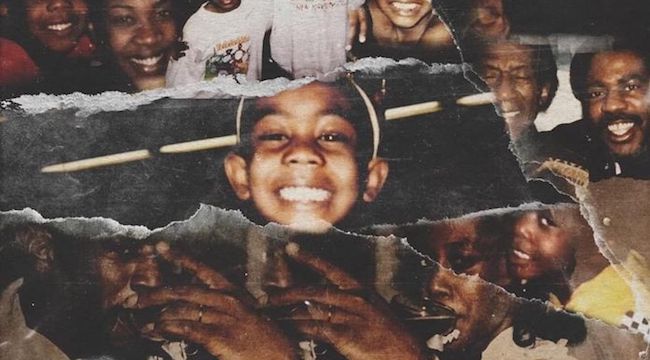
Life Of Desiigner has had a strange gestation. It went from highly anticipated, heavily scrutinized debut of a rapper who was even more harshly examined, to a footnote, an obscure oddity that many would be surprised to find out still existed. And yet, exist it does, appropriately, as a surprise-released, 7-song EP with a foreshortened title. It’s a reminder of Desiigner, the rapper, his career, and all the oddball quirks that made him so fascinating, ridiculed, and hotly debated. It serves as a fitting reintroduction to everything that made him one of rap’s fastest rising stars, and the unfortunate comparison that likely derailed his career and turned him instead into a curio, a strange relic of hip-hop’s weird transition into the streaming era.
Once upon a simpler time, fans enthusiastically spectated the alleged friction between dirty Sprite enthusiast Future and fellow Atlantan trap-rapper Rich Homie Quan over credit for their similar, raspy-throated, marble-mouthed style, much like the current, long-raging debate between T.I. and Gucci Mane over which of the two originally coined the subgenre’s double entendre title in the first place. Quan insisted that Future was biting his style, Future claimed he was a one-of-a-kind original.
Then, along came Desiigner, whose sonic resemblance to Future surpassed Quan’s by a country mile, even convincing many casual listeners that his single “Panda,” an ode to the BMW X6, was, in fact, a new Future song. Confusing matters further was Desiigner’s insistence that he had “broads in Atlanta,” despite the fact that until the screaming success of “Panda,” he’d never set foot much further outside of his native Brooklyn than New York City and its surrounding areas. After issues of his identity were hashed out, Desiigner was hounded mercilessly by rap’s media and fans, wondering just how it came to be that he sounded so much like an established star. It was even rumored the seasoned vet was suing his double over the song (later proved untrue), ultimately resulting in Desiigner taking an extended break from the public eye.
Indeed, to the uninitiated ear, Desiigner’s gravelly timbre is nearly indistinguishable from Future’s — the only readily identifiable facet of his songs are his distinctive ad-libs. Nowhere on L.O.D. is this more egregious — and, incidentally, most enjoyable — than on “Destiination,” which sounds like nothing so much as a leftover from Future’s HNDRXX sessions, carefully salvaged and rejuvenated by Desiigner like the janitor who rescued Drake’s old rhyme book from his uncle’s factory and sold it online for a small fortune.
However, if one regards the vocal quirk as a bug and not as a feature (you read that right), it becomes so much easier to simply melt into the exaggerated criminal tableaus and enjoy the ride. Think of it as a trap Pirates Of The Caribbean ride at Disney — the original version may have been best, but in hindsight, shoehorning the character of Jack Sparrow doesn’t really take anything away from the ride so much as it offends the rider’s sense of nostalgic carelessness. Sure, some of the toxic, old, sexist and racist tropes were done away with, but everything serves the same basic function: Transporting the consumer away from real life to live an adventurous fantasy, albeit at a safe distance and at an idyllic, predetermined pace.
You know what you’re getting from a Desiigner project at this point: Hyperbolized drug dealer fantasy, energetic, yet avant-garde delivery (as on the end of “Tonka”), and a slightly different flavoring of a familiar product. L.O.D. is audio Coke Zero. Your appreciation of it may vary depending on how you felt about the last ten or so Future albums, but for what it’s worth, there’s less of that problematic tingle at the base of your neck from realizing that a pretty hefty portion of Future’s recent output consists of goads toward ex-wife Ciara and new boo Russel Wilson. There’s even maybe a little less guilt in the consumption since it’s been established already that Desiigner is prone to aggrandizing his narrative; in all likelihood, very few drugs were sold in the course of bringing L.O.D. to life, making it something like hyperrealistic crime fiction.
https://www.youtube.com/watch?v=oSGqnGNJDBI
And there’s something sweet about Desiigner’s charming, inarticulate bluster. He’s just so happy to be here. Effusive joints like “After Party” and “Pop iiT” are every bit as enjoyable as Future’s most boisterous bops, minus the maudlin mopery and depressive self-medication. Desiigner doesn’t have much of anything to be sad about, so he parties without Future’s dark cloud weighing down the proceedings. He can’t really help who he happens to sound like, and if he is mimicking Future’s flow on top of having an unfortunate tonal proximity to his Atlantan forebear, at least he’s doing something a little different with it, coloring outside the lines to fill in some of the grey area in rap’s rapidly expanding but increasingly saturated map. He certainly wouldn’t be the first; even Jay-Z borrowed a few elements of his flow from Big Daddy Kane early on and continues to magpie new adornments to his flow to this day.
https://www.youtube.com/watch?v=MKJXzu5lDTw
So, L.O.D. may not do much to differentiate Desiigner from his vocal doppelgänger, but if there’s any justice in the world, it will at least put him back in hip-hop’s conversation and win him a few new fans. To be completely square, rap needs his unfettered jubilance and his geeked-out eccentricity, if only because far too many rappers take themselves far too seriously these days — even the ones who go out of their way to look like clowns. Desiigner, in many ways, is a throwback to the days when every kid wanted to be just like their favorite rapper. They memorized all their songs, then started making slight changes, trying to carve out a tiny piece of ownership of this thing that they loved, turning into something that was if not new, then something entirely their own.
L.O.D. is out now via G.O.O.D. Music and Def Jam Recordings.






